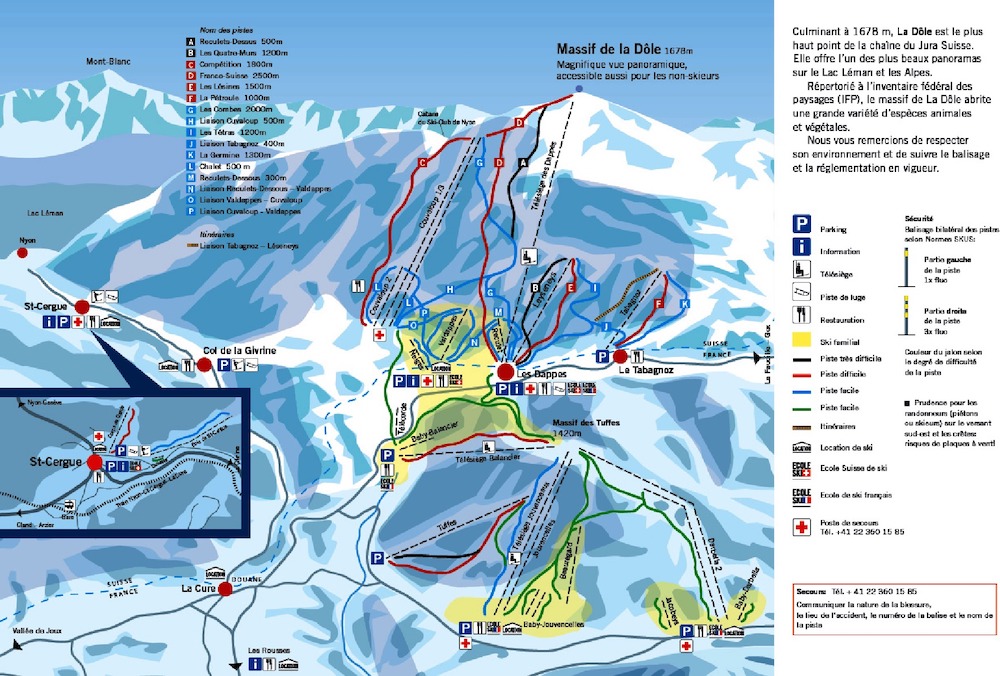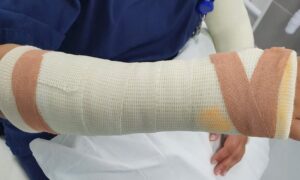Never, ever ask ski bums to name Europe’s best ski destinations unless you have a couple of hours to spend listening to their anecdotes while pouring over maps of the Alps.
Trust us … this year, we started asking our expat experts as well as European friends and associates for their recommendations. And we’ll add suggestions, but we have a lot for this first installment, because they gave us more than we can handle in one post.
In past years, we’ve focused on the off-the-beaten-path ski destinations only expats seem to know, and there’s some of that in this post. But when we talk with people who ski a lot, they tend to look at things in terms of the best skiing. Period. And damn the costs or hours spent getting there.
All of these ski destinations are in Switzerland, France and Austria and have four-and-five star hotels and restaurants. So this is not a “how to scrimp on the slopes” post. That’s for another time ….
Probably the most puzzling part of skiing in Europe for newly arrived expats is how all this fits together. You’ve heard about all the most famous resorts but don’t really know geographically where they are. Well, it makes a difference.
The best skiing in Europe is in Switzerland, France and Austria. Our experts rank Germany and Italy a bit lower.
The first point our interviewees made to us was, “Switzerland is expensive … everything in Switzerland. Lift tickets are more expensive in Austria than France, but food is cheaper.” So start saving.
Second, getting to and from the slopes at peak periods can be treacherous as those of us who’ve sat for hours in staus on the autobahn know only too well. Most of the Alpine ski villages are connected by two-lane mountain roads and the very thing you’re hoping for – lots of snow – can shut down travel.
So while it’s not as sexy as driving to the slopes in your Lusso GTC4, you might consider the ski train/ski bus so you can at least snooze and watch vids while you’re stuck in a mountain pass.
The third point – sometimes the European resorts you’ve heard about your entire life aren’t that great for skiing. Gstaad and St. Moritz in Switzerland got dinged by our panel as being mostly for the fashionistas and poseurs, and sort of anachronisms of the Jet Set Sixties.
So, here are their recommendations for Europe’s best ski destinations in no particular order.
Ladis, Austria
Ladis is a super-remote private base that has no ski area itself. But it’s a great place to stay with access to the Serfaus-Fiss ski area.With its own castle, rural feel and quaint hotels, “this village is like going back 100 years in time,” says John Reid, a former ski racer and instructor from Scotland.
Technically, this is known as Serfaus-Fiss-Ladis, which is a mouthful. Serfaus and Fiss are both villages, but larger than Ladis. And both are most touristy. Stick with Ladis.
Austria in general is a more affordable ski destination than Switzerland, obviously, and in some cases a better deal than France, according to our experts.
The season at Serfaus-Fiss-Ladis opens on 5 December and closes on 19 April.

Details:
- 214 kilometers of slopes
- ski area of 460 hectares
- slopes for all skill levels: 47 kilometers of blue, 132 kilometers of red and 28 kilometers of black slopes
- 30 kilometers of cross-country skiing trails
- a 22-kilometer cross-country skiing route
- open into spring
- transportation/lift capacity of 90,000 people per hour
- 68 state-of-the-art cable car and lift facilities to ensure safe transportation of skiers and snowboarders
- freestylers are welcome
- lift ticket prices start at 146 euros for a three-day family pass
Best place to stay:
Where to fly in:
The closest airport to Ladis is Innsbruck, about 80 kilometers away.
Les Trois Vallées, France
Our experts were unanimous that the good thing thing about LTV is, it’s a nice big area and everything is super-well connected.
But physically, this is a huge area – it claims to be the largest ski complex in the world – with 600 kilometers of runs and, of course, off-piste skiing.
So, you have to do your research about individual ski destinations in the valleys.
Méribel is the heart of 3 Vallées and the oldest resort dating back to the 1920s. It also has arguably the widest range of amenities from cottages to high-end hotels. But if you’re looking to blow it out, you want to go to Courchevel.
“Courchevel is ridiculously expensive. It’s people lunching in fur rather than skiing,” says Edzard Janssens, our in-house globe trotter. “It’s really similar to Aspen in that it’s a place to see and be seen. If you care about who’s who and want to walk around in your fur coat, go there.”
Ironically, Edzard describes the aprés ski as “not exciting.”
The season opens 7 December and closes on 26 April.

The numbers are crazy:
- 600 kilometers of pistes
- 328 downhill pistes
- 166 ski lifts
- more than 2,100 snow canons
- 35,000 hectares of nature
- 105 kilometers2 (or 10,500 hectares) of skiable area
- lift tickets start at 63 euros and you can get yours here.
Fly into Grenoble Alpes Isère Airport.
Verbier, Switzerland
“There are three places in the world a skier must go – Aspen, Whistler (in the Canadian Rockies) and Verbier in 4 Vallées,” Edzard said.
Verbier is a “real city,” not a ski village. As the main resort in the Four Valley’s Ski Area (Switzerland’s largest), Verbier is a ski destination for the rich and shameless who live in Geneva, a two-hour drive away.
So this is an A-Lister destination famous for having snow when other resorts don’t and for its sensational nightlife.
The season opens unofficially in November as far as we can tell and closes in early March.

The numbers:
• the Four Valleys area has 410 kilometers of linked pistes with 93 ski lifts. There are blue, red and black runs as well as cross-country.
• pistes start at about 1,250 meters high and range up to 3,330 meters, or 11,000 feet. Which is where most people start needing oxygen.
•for 2019, 6-day passes start at 170 euros for kids
Where to stay: W Hotel in the center of Verbier at the base of the main Médran lift.
Verbier is a two-hour drive from Geneva airport.
Don’t want to fly into Geneva? Take a ski train from London.
Davos, Switzerland
Davos is most famous as the gathering place each January for the most influential people in the world at the World Economic Forum.
It’s also a hell of a place to ski.
There are actually six ski areas of the Davos/Klosters network. For example, you can ski from Davos itself to Klosters-Serneus, then take a train or bus back to Davos, said John Reid.
If there’s a knock on Davos, it’s that it’s not particularly charming, built originally as a sanatorium center for people with tuberculosis. But there are lots of hotels (none of them particularly cheap because this is Switzerland.)
Season opens 21 December and closes 29 March.

The details:
• total number of lifts: 18
• total length of runs – 300 kilometers in six total areas.
• the biggest ski area is Parsenn.
Where to stay: Hotel Edelweiss Davos in Davos Dorf for the best access to the lifts.
Mayrhofen, Austria
In, Mayrhofen “the off-piste options are crap, but on-piste … it’s a decent area with a good atmosphere,” says Edzard, who rates it as affordable. Which is weird because it has some of the most extreme skiing in the world.
Part of Mayrhofen, Zell am Ziller is Europe’s steepest and longest black diamond run at 1,930 meters. If you ski from the top of the ski area back into the valley below, you cover almost 2,000 vertical meters over a distance of about 10 kilometers.
This is the site of the fabled Harakiri piste, harakiri the Japanese word for suicide. There’s a nearly vertical 78-degree drop of about 400 meters of the total 1,500 meters. So this is the steepest groomed slope in Austria. Maybe not the place for novices.
The aprés ski is also good here, Edzard says.
The season opens 7 December and closes 19 April.

Details:
• 42 kilometers of slopes served by 58 modern lift and cable car systems
• a permanent giant slalom course at Unterberg Racing Paradise.
• you can buy 1-day lift tickets here starting at 25 euros for kids.
You can fly into Innsbruck.
Take the train to Kitzbuhl and get off at Jenbach, then take to the old train to Mayrhofen.
La Dôle, Switzerland
We had to have one destination in the Swiss Juras and this is it. Our experts say if there’s snow (and that’s not guaranteed in these foothills to the Alps on the Swiss/French border), this is a fun day out.
La Dôle is up in the mini-mountains just north of Geneva and is more of a family ski outing destination. But experienced skiers won’t be bored. “The facilities are there, and there are fewer people,” John says. Which is a good thing, because this is – compared to say Les Trois Vallées – tiny.
The ski season opens 7 December and closes 5 April.

Details:
• at least 21 lifts on 26 kilometers of pistes between 1,150 meters and 1,678 meters high
• sledding and cross-country skiing
• one-day lift tickets start at about 13 euros for kids and 22 euros for adults, peak season converted CHF to euros.
Laax, Switzerland
If you’re at the top of your game, this is the place for you … renown for its freestyle amenities. This is snowboard heaven, with multiple events/competitions during the winter, the biggest halfpipe and the longest superpipe, all at Snowpark Laax Big events include the Laax Open, one of the biggest snowboard events in Europe.
Laax is really big, at least in their marketing, and includes Flims, Laax and Falera – a total of five Swiss valleys.

The numbers:
• Laax has 224 kilometers of pistes with 28 ski lifts
• there are 29 separate ski facilities and multiple snow parks.
• no worries about accommodations, with everything from super-‘spensive hotels to little ski huts and group accomodations.
• there’s a free Laax app with live info.
• the majority of the skiing is between 2,000 and 3,000 meters high on glaciers, so Laax is open through 6 March.
Lift tickets vary in prices according to the season, and you have to go here to calculate the total. We randomly plugged in five days in late January, and the total was 395 Swiss francs per person, or about 360 euros, or 72 euros per day.
Hey, it’s Switzerland.














